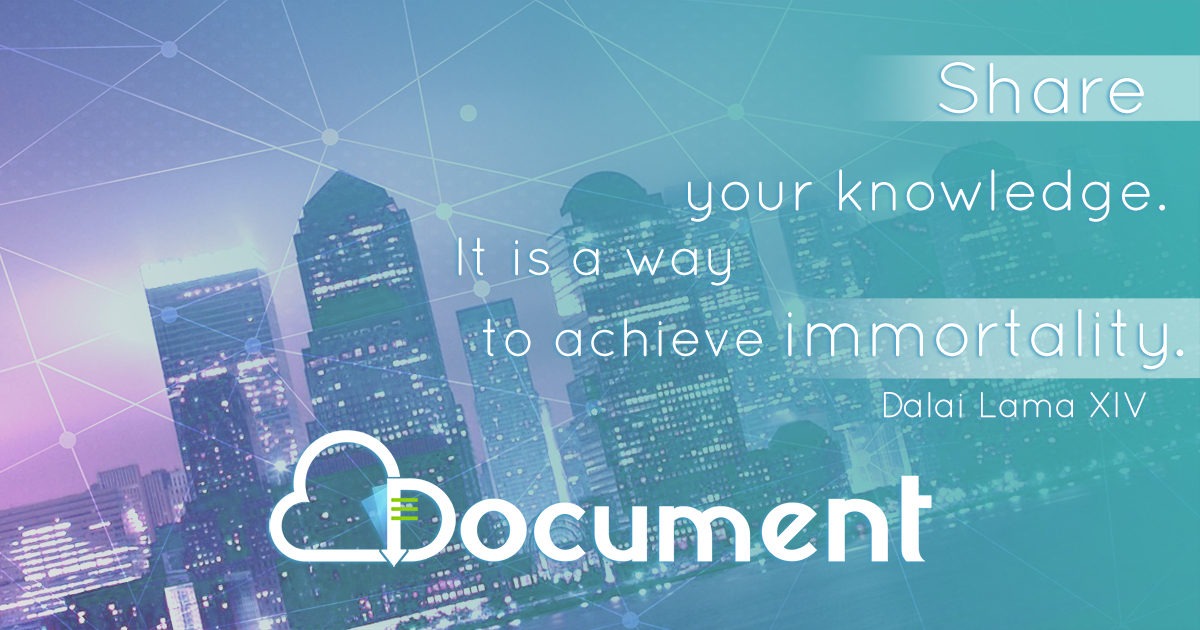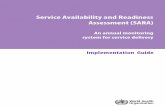Smart City Concept and Review on Strategic Readiness of Sri ...
-
Upload
khangminh22 -
Category
Documents
-
view
0 -
download
0
Transcript of Smart City Concept and Review on Strategic Readiness of Sri ...
PP. 62-78
Published by: Department of Marketing Management, University of Kelaniya, Sri Lanka
ISSN 1800 – 4989 Vol 3 No 2: July - December 2017
ABSTRACT
Smart city concept is one of the sought after strategies in many countries whereas the role of information
communication technology (ICT) is broadly highlighted within. Recent studies extendedly discuss the
contents and the integrated nature of the smart city concept. Sri Lanka is also attempting to initiate
some massive projects in which smart cities become resulted. However, it requires comprehensive
policy framework and the execution strategies to activate smart cities. This has found challenges even
though it makes huge potential for different industries and lifestyles of the related communities.
Alongside, explaining the essentials for smart city concept in Sri Lanka was the main focus of this
paper. Authors followed a comprehensive literature review as the main research tool to investigate the
empirical thoughts and findings related to smart city concept to explain the integrated contents of it.
Alongside, paper attempted to discuss the key components and integrated concepts towards smart city
concept providing policy makers to frame smart city strategy with supportive inclusions. It has made a
special attention to Sri Lankan context by reviewing the policies and strategies made on related projects
and programs on information communication technology (ICT) to reveal the readiness of the nation
towards smart city development perspectives. Specific attention was made to link the discussion on how
smart city model and the role of ICT should act connectively for economic sustainability. Paper
presented a conclusion by proposing the future research and policy development directions to examine
the effective strategies to plan and execute smart cities in Sri Lanka.
Keywords: ICT, Smart City, Sri Lanka, Sustainability.
Sampath Liyanage Deputy Inspector General of Police, Sri Lanka Police, Ministry of Defense, Sri Lanka
D.M.R.Dissanayake Senior Lecturer, University of Kelaniya, Sri Lanka
Smart City Concept and Review on Strategic Readiness of
Sri Lanka
PP. 62-78
Published by: Department of Marketing Management, University of Kelaniya, Sri Lanka
ISSN 1800 – 4989 Vol 3 No 2: July - December 2017
1. BACKGROUND OF THE STUDY
Having better living standards is a key focus of every human being in the world and the governments
need to focus on providing better and enhanced living standards for the people in the respective
countries. Urbanisation has become a key factor with the developments of countries whereas world is
experiencing a fast growth in urbanisation, and it is estimated that around 50% of the world population
is living in cities whilst it will reach 70% by 2050 (Naphade, Banavar, Harrison, Paraszczak, & Morris,
2011). Though urbanisation is considered as a key factor in evaluating the development of a country,
the governments also face issues to provide facilities for the people in the cities with increased
urbanisation. This has resulted to introduce the concept of smart cities in order to identify and find better
as well as smart solutions for urban population in particular (Cohen, 2014). The smart city concept came
to the arena and discuss openly in 1990’s since the concept was identified as a solution to reduce the
human traffic in urban areas and the high-power consumption due to increased population whereas the
concepts of globalisation, technology and innovations attributed in urban development (Harrison &
Donnelly, 2011). The focus of the concept at this stage was on innovations, creating opportunities as
well as enhance employment (Harrison & Donnelly, 2011). As a result, governments and the policy
makers proposed to use information communication technology (ICT) as the main service platform that
increases the living standards, prosperity and quality of life of the people who live in urban areas or
cities.
ICT is an essential and important component in smart city concept that can be used in enhancing the
productivity of the services and the infrastructure of the smart cities (Harrison & Donnelly, 2011).
Technology is having a higher usefulness in reducing the usage of energy as well as reducing the carbon
emission that will create a higher positive contribution for the global climate changes which is identified
as a critical environmental issue (Hodgkinson, 2011). The innovation in the technology is used to
minimise the consumption of natural resources and reduce the pollution in the cities that resulting to
increase the quality of life of the people who live in cities (Jong, Joss, Schraven, Zhan, & Weijnen,
2015). The empirical insights are found claiming digitally enabled cities of a country or a region as
intelligent cities whilst such ICT connected societies are highlighted in modern ICT driven e-societies
(Dissanayake, 2011; Komninos 2002). The modern terms of smart cities are attributed with digital
information availability for the areas such as health, education, governance and knowledge transferring
activities (Yigitcanlar 2015; Townsend, 2013). We also highlight that countries like Sri Lanka can be
benefitted via smart city concept since its economy is thriving towards urbanization and service sector
driven.
PP. 62-78
Published by: Department of Marketing Management, University of Kelaniya, Sri Lanka
ISSN 1800 – 4989 Vol 3 No 2: July - December 2017
1.1. Smart City Initiation of Sri Lanka
The government of Sri Lanka initiated a new concept for the country called “Megapolis Plan” which
focused on developing the western province of the country which includes Colombo district and
Colombo city as the main commercial regions in 2015. It had extended plan for the rest of areas too.
This development plan was introduced in three phases as namely Urbanisation to consider as a better
policy for the economic development of the country, have better organised urbanisation policy and a
plan to reduce the pressures in current developments of infrastructure, services and environment, and
Minimise the cost of capital in developing urban cities in the country (The Western Region Megapolis
Planning Project, 2016. There is no difference in the foundation of Megapolis Plan and smart city
concept whereas Megapolis plan has planned to introduce the smart city concept to the country. As to
indicate the positive focus of the government on the concept, it introduced a fresh and new cabinet
minister as well as a ministry for the efficient introduction of the smart city concept to the country (The
Western Region Megapolis Planning Project, 2016). With the approvals of the cabinet, Kandy, which
is one of the most attracted cities in the country attributed with cultural, historical and economic values
to convert as a smart. Then it had a plan to move to Galle which is the capital of the southern region
(The Official Government News Portal of Sri Lanka, 2015).
The smart city plan of Sri Lanka had many economic and social inputs. “Advance ticketing or booking
systems, automated settlements, big data, e-government services in real time, electronic and smart card
ticketing, environment sensors, government news and alerts, GPS navigation and digital location
identification, providing government services through apps, smart digital meters in utility management,
street lights and automation, management of traffic and predictions by phones, delivery efficiencies
through digital addresses and other related efficiencies of the digital addresses were some of the
services that the government planned to offer through the Megapolis Plan or the proposed smart city
concept (The Western Region Megapolis Planning Project, 2016). Technology, data, information and
the information communication technology (ICT) are considered as the key factors that create an impact
for sustaining the concept of smart cities (Cisco, 2014). Almost all the developed countries that adopted
smart city concept used many developed technologies such as Global Positioning System (GPS), Global
System for Mobile Communication (GSM) and Wi-Fi etc. For the implementation, conduction and
success of the smart city operation. The need of very effective and efficient technologies has become
highly important to the success of the smart cities and the future requirement of the technologies will
be high when cities becoming smarter (Cisco, 2014). The technology infrastructure, data and the
security of data are considered as critical success factors to sustain of smart cities in the world and smart
cities will be a failure and a waste of money if technology is not being properly managed within (Pan,
et al., and 2013).
PP. 62-78
Published by: Department of Marketing Management, University of Kelaniya, Sri Lanka
ISSN 1800 – 4989 Vol 3 No 2: July - December 2017
The above arguments on sustaining of the smart city concept indicated that the countries need to have
a strong, consistent and well-established technology infrastructure. It includes ICT and data even more
than any other factors that required for the implementation, operation and sustain of the smart cities
whereas Sri Lanka is also alert on those (The Western Region Megapolis Planning Project, 2016). Sri
Lanka is also having a sound ICT infrastructure whereas Sri Lanka is the first to introduce 3G and 4G
technology which involve with fast internet and data transfer in the South Asian region and it was first
to consider on the 5G technology and conducting trial implementation of the new technology (Official
Government News Portal of Sri Lanka, 2016). However, ICT adaptation into the lives and industry
practises seem still arguable in Sri Lanka even though massive initiations have been implementing over
the years (Dissanayake, 2011: Official Government News Portal of Sri Lanka, 2016). The smart city
concept is a critical concept for Sri Lanka as per its future potential, but execution of the concept is a
challenging task.
2. EMPIRICAL AND CONCEPTUAL REVIEW ON SMART CITY CONCEPT
Smart city has been defined as a unit that considers to increase the performances of economy,
governance, people, environment, mobility and living through enhancing the activities of aware and
independent people who are self-decisive through identification of intelligence solutions that ensure
and focus on the enhanced service providence and its quality (Giffinger, Fertner, Krama, & Meijers,
2007). Smart cities are the processes which make the urban cities with green environment that helps to
minimise the damage to the environment through reduced carbon emission through the help of
intelligence of economy. Smart city life demands higher value through actual current data which are
collected from the sensors and activators and knowledge that is innovative in helping the standards of
living of the people and the economy (Zygiaris, 2013). Additionally, smart city has also been defined
as a city that uses advanced technology to connect elements of the city, information and people in order
to create a sustainable environment, innovative and competitive environment to enhance the quality of
life (Cisco, 2014).
By considering those arguments, smart city can be reflected as a concept focuses in a process of creating
environmentally focus economic development and quality life of the people through technology. The
ICT infrastructure creates a higher impact in achieving the objectives of a smart city (Giffinger et al.,
2007). A country requires a comprehensive e-society and e-government policies to establish ICT
enabled business models and community services (Dissanayake, 2011). Thus, availability of quality
data and information made via effective and efficient ICT platforms could be the key factor in a smart
city to gain higher effectiveness in creating a green environment. In addition, smart cities support for
economic development assisting to increase the standards of the quality of life of the people alongside
the business sector growth.
PP. 62-78
Published by: Department of Marketing Management, University of Kelaniya, Sri Lanka
ISSN 1800 – 4989 Vol 3 No 2: July - December 2017
3. DISCUSSION ON THE CHARACTERISTICS OF A SMART CITY
Smart city is having its own characteristics whereas society, economy, environment and life styles are
prominent within. Smart city is identified with the people, infrastructure and the environment where
such evaluations help to monitor the performances of any smart city (Giffinger et al., 2007). As per
Giffinger (et al., 2007), smart city exhibits some key characteristics as reviewed in the undermentioned
contents with supportive empirical insights.
3.1. Smart Economy:
Gaining a higher economic competitiveness through entrepreneurship and innovation is the main focus
of smart economy (Giffinger et al., 2007). Thus, the people who live in smart cities need to produce
new innovative ideas that could convert into better business creating an opportunity for such ideas to
go international and even to attract customers from cross borders. Further, these smart business ideas
and the business will produce a higher productivity for the development of the city (Giffinger et al.,
2007; Kondepudi, 2014). Thus, smart city should be attributed by smart economy with competitive
features of innovative technical applications providing business community to apply entrepreneurial
business ideas. In addition, smart city concept highlights the smart economy with the integrated
components of sustainability, quality of life, urban aspects and intelligence (Dhingra & Chattopadhyay,
2016). Moreover, economic factors have been claimed with social, environmental and intelligence
related components when it comes to analyse the attributes of smart city concept (Kondepudi, 2014).
Thus, smart economy is an integrated component found within the framework of smart city.
3.2. Smart People:
The focus of the people on the education and the qualifications is not making them smart people, thus,
people need to have a quality public life as well as interaction with others as referred in cosmopolitanism
perception indicating they belong to one single community with no other demographic differences
(Balakrishna, 2012). Such a perception of smart people will further support the development of the city
whereas this required people to be more informed and educated where such could be achieved through
the support of the digital technology (Balakrishna, 2012). Digitally abled systems can enhance
communication efficiencies through technology whereas the smart people are the people who live under
the conditions of innovation enhancements, information sharing, enhanced learning and knowledge
while having and enhanced inter relationships and interactions supported by the technology and
communication efficiencies (Hollands, 2008). Thus, smart cities require informed and exposed
communities supported by information links via digitalized systems. Sri Lankan city community is also
a diversified community compared to the South Asian region and attributed with advanced literacy
PP. 62-78
Published by: Department of Marketing Management, University of Kelaniya, Sri Lanka
ISSN 1800 – 4989 Vol 3 No 2: July - December 2017
compared to neighbouring countries. Thus, converting the city community towards smart people seems
not that challenged.
3.3. Smart Governance
Governance is considered as the collaboration of information, structures, norms, rules and procedures
that create or focus to create a certain behaviour among the people (Johnston & Hansen, 2011). Smart
governance focusses on reforming the governance infrastructure to become more smart, efficient and
responsive to motivate the people to strive with lower level of resources and encourage to focus on new
sources (Johnston & Hansen, 2011). The support of communication and computer-based technologies
are highly important in creating smart governance since such support will help to increase the ability of
the people to organise, govern, interact and supports to ensure a higher accountability (Chen, 2010).
Further, the smart governance leads to increase the data exchange, collaboration, communication and
service integration whereas information communication technology plays a major role in smart
governance (Chen, 2010). Additionally, having a higher transparency in decision making, political
strategies and governance and superior public services are key components of smart governance which
informational availability as well as an infrastructure to make information available are must in smart
governance supported by ICT infrastructure (Lin, Zhang, & Geertman, 2015). Sri Lanka is also striving
with many ICT initiatives with e-governance and e-society projects and the country’s ICT policy has
been transforming with timely required matters to create strategic foundation for smart governance
(Dissanayake, 2011). However, sector integration and public awareness with attitudinal transformation
should be further considered to create extended smart governance in Sri Lanka even though there are
many positive events found.
3.4. Smart Mobility
The focus of smart mobility is creating efficiencies in fuel consumption of all the transportations where
such strategies could reduce the energy consumption and environment pollution (Lombardi, Giordano,
Farouh, & Yousef, 2012). Samrt mobility can further reduce the carbon emission while offering a safer
transportation (Giffinger et al., 2007). New logistic and transport technologies and new transport
systems are considered to increase the urban traffic and mobility to achieve smart mobility (Lombardi,
et.al. 2012). The sensors that developed for transportation system and the GPS technology could
consider in providing safety of transportation and the development in the communication technology
could be used to do information sharing helping to increase the smartness of the mobility that reduce
energy consumption and pollution (Maheshwari, Kachroo, Paz, & Khaddar, 2015). On the other hand,
the focus of smart mobility could be linked with non-motor vehicles such as bikes which reduce both
the energy waste and environment pollution due to higher carbon emission. Such projects should be
implemented for communities attributed with higher level of education so that information sharing
PP. 62-78
Published by: Department of Marketing Management, University of Kelaniya, Sri Lanka
ISSN 1800 – 4989 Vol 3 No 2: July - December 2017
through ICT is quite efficient (Yazid, et al., 2011). Thus, smart mobility is always supported by smart
people attributed with responsible commitments and exposure for smart city life style.
3.5. Smart Environment
The smart environment is one of the main mechanisms found within a smart (Liu, Wang, Xie, Mol, &
Chen, 2011). Smart environment focuses on reducing the environment pollution mainly through carbon
output (Giffinger et al., 2007). Further, it has become very important to have a higher focus on
renewable energy and having a low focus on the non-renewable energy in achieving a smart
environment (Giffinger et.al. 2007). Thus, it has to consider more in technology developments that
reduce the consumption of energy and reduce environment pollution while reducing the waste of natural
resources which leads to have a better quality in life as well as sustain the resources for future
consumption (Jong et al., 2015). Sri Lanka is focusing more on green friendly energy sources including
sola power projects, and this trend is much important to encourage a society for smart environment.
Accordingly, smart environment could be achieved with policy driven decision of a country since
energy sourcing and consummation should be governed by government policies and authorized bodies.
3.6. Smart Living
Smart living focuses on increasing the living standards or increasing the quality of lives of the people
in the smart cities where it links with housing, health, safety and culture of people live in a city society
(Zygiaris, 2013). The technologies for smart living should play a vital role to facilitate human life style.
Thus, ICT could be used in most of the aspects of the human life such as assessing for daily necessities
of the people like food, transportation, medication, education entertainment and housing etc. This
requires a system to provide accurate and fresh information with a higher efficiency of information flow
to the people (Lee, et al., 2011). This mechanism could result people to consume essentials for their
daily requirements with affordability of the people (Lee, et al., 2011). Further, smart living is an
emerging application of sensor technology, networks and information collaboration where information
collaboration offers a higher efficiency for the people in researching for information required. The
sensor technology offers a higher service to the end users which mostly be effective in health care
services (Lyu, et al., 2015). Likewise, ICT could directly support to establish smart living required for
a smart city for different consummation requirements.
In brief, aforesaid six characteristics of a smart city prove that ICT plays a major role in smart city
concept whereas the efficiencies and the effectiveness of ICT could be crucial in this regard. Planning
and execution phases of smart city projects need a serious focus on ICT as an enabler of many integral
components within. Thus, countries require a strong policy and strategy on ICT to establish smart city
concept with sustainable focus.
PP. 62-78
Published by: Department of Marketing Management, University of Kelaniya, Sri Lanka
ISSN 1800 – 4989 Vol 3 No 2: July - December 2017
4. EXPLANATION ON SUSTAINABLE CITIES
A city that has been planned with a higher consideration on the impact to the environment focusing
people to reduce the inputs such as food, water and energy as well as a focus on reducing the waste
outputs like water pollution, air pollution and heat is considered as a sustainable city (Kolte, et al.,
2013). Sustainable cities are defined as the places that focus on enhanced living quality in the means of
policies connected on reducing the resources demanded for energy and materials (Jong et al., 2015).
Smart cities are explained as the cities that occupy arrangements in measuring energy and water
consumption, energy mix, green-space ratios, pollution and carbon emissions, primary forests and
agricultural land loss, waste volumes and recycling rates and water quality aiming sustainable
atmosphere (Brugmann, 1997). Smart cities focus on reducing the impact of its behaviour to the climate
changes and aiming on achieving climate chargers with the use of ICT. ICT can be used to develop
innovative methods to reduce usage of energy and greenhouse gas emission, for instance, companies in
the telecommunication industry focus to reduce the consumption of energy (Kramers, Hojer,
Lovehagen, & Wangel, 2014).
Smart cities are focusing on reducing the traffic jam that increases the safety of the people in the roads,
increase efficiencies in life and reduce the energy and fuel waste which again reduce the carbon
emission with the use of new technology to use smart traffic lights and increased information flow of
traffic alerts in real time (Barba, Mateos, Soto, Mezher, & Igartua, 2012). This indicates that the smart
cities are focusing to be sustainable cities in terms of reducing the waste of input as well as output that
create a negative impact to the environment. Such measures could reduce the usage of resources that
could save for future and focusing more on green environment where the ICT is used in achieving the
sustainability through information sharing and integrations (Kramers, et.al.2014). The environmental
protection strategies implemented in smart cities and the lives could assist sustainability via energy
savings and reducing the harmful activities to environment (Fischer, 2008). Additionally,
demobilisation is another measure where digitalisation reduces the physical transportation since the
digital products can mobile through telecommunication networks (Kramers, et al., 2014). Thus, the
ability of the ICT to demobilise or reduce physical transportation can reduce the costs and the energy
consumption as well as reduce the waste and save environment via automated methods resulted by
digitalisation (Kramers, et al., 2014). Alongside, mass customisation is another opportunity that ICT
has to support for the sustainability in smart cities since this reduces the resource requirements for
customisation (Kramers, et al., 2014). In brief, ICT brings sustainability in smart cities since ICT could
be used to increase the efficiencies in operations which required higher resources such as transport,
energy and water systems (Kramers, et al., 2014). In overall, sustainability has been a widely concerned
matter in Sri Lankan firms whilst some environment sensitive industries in manufacturing sector have
been converting their value chains with greener processes and systems. Green value creations via
PP. 62-78
Published by: Department of Marketing Management, University of Kelaniya, Sri Lanka
ISSN 1800 – 4989 Vol 3 No 2: July - December 2017
sustainability-driven value chains heavily depend on green supply chains. Thus, even smart city concept
has to be alert and linked with green supply chain strategies for sustainability. Having said, it can
postulate sustainability and smart city are much interrelated concepts and most of the components
required for a smart city directly connect to sustainability.
5. CONCLUSION
As it reviewed in the foresaid contents, smart city concept is integrated and holistic in terms of its model
and the practical use. Thus, executing a smart city concept needs to focus on smart urbanism, smart
economy, smart environment for sustainability, smart energy, smart mobility and smart life style for a
strong propel (Cocchia 2014; Lara, Costa, Furla & Yigitcanlar, 2016). This provides a comprehensive
mind mapping for a county to plan and execute a smart city project. Smart city is not technology or
digitalization, but a strategy that connects life style of people with related services, systems and
processes through digital knowledge and information. Sri Lanka is also a county that desperately drives
to implement smart city concept. Sri Lanka needs to focus on smart city concept since it does add
values to overall value chain of many industries found in urbanized communities. Sri Lankan is a huge
potential for tourism sector and it has to focus on many strategies to enhance the tourism sector revenue
models. Thus, smart city concept should be executed with a strategic plan enabling city life of both
locals and foreigners connected to many consumption opportunities. Thus, government has to play a
strategic role to encourage industries and firms to be a part of the smart city concept. It will generate
positive results for the firm and subsequently generates revenue to the nation. The most challenging
matter is to maintain one specific policy for ICT and town planning aiming at commercialization
benefits. According to the matters discussed, smart city concept should not be implemented as a single
project but in the face of an integrated model. The country’s policies, people motivation for smart life,
ICT and environment planning should be integrated for a sustainable plan to implement smart city
concept. Future studies have to investigate the effectiveness of smart city concept with reference to
policy frameworks, institutional coordination, stakeholder participation and public perceptions. In
overall, smart city concept should be studied and properly planned as a holistic model that connects
with social, economic, environmental and technical components within.
6. REFERNCES
[1] Balakrishna, C. (2012). Enabling Technologies for Smart City Services and Applications. 2012 Sixth
International Conference on Next Generation Mobile Applications, Services and Technologies,
224.
[2] Barba, C. T., Mateos, M. A., Soto, P. R., Mezher, A. M., & Igartua, M. A. (2012). Smart city for
VANETs using warning messages, traffic statistics and intelligent traffic lights. 2012 IEEE
Intelligent Vehicles Symposium. doi: 10.1109/ivs.2012.6232229
PP. 62-78
Published by: Department of Marketing Management, University of Kelaniya, Sri Lanka
ISSN 1800 – 4989 Vol 3 No 2: July - December 2017
[3] Brugmann, J. (1997). Is there a method in our measurement? The use of indicators in local
sustainable development planning. Local Environment, 2(1), 59-72.
[4] Cocchia, A. (2014). Smart and digital city: A systematic literature review. In Smart city pp. 13–43.
Berlin: Springer
[5] Cohen, B. (2014). The 10 Smartest Cities In Europe. http://www.fastcoexist.com/3024721/the-10-
smartestcities
[6] Chen, T. M. (2010). Smart Grids, Smart Cities Need Better Networks. IEEE Network, 24(2), 2-3.
[7] Cisco. (2014). Smart City Readiness: Understand the Issues to Accelerate the Journey. White
Paper. Smart City Council.
[8] Dhingra, M., & Chattopadhyay, S. (2016). Advancing smartness of traditional settlements-case
analysis of Indian and Arab old cities. International Journal of Sustainable Built Environment, 5(2),
549–563.
[9] Dissanayake, R. (2011). Information Communication Technology (ICT) Policy of Sri Lanka and its
Impacts to Socioeconomic Development, Journal of Education and Vocational Research, 53-59.
[10] Fischer, C. (2008). Feedback on household electricity consumption: a tool for saving energy?.
Energy Efficiency, 1(1), 79-104.
[11] Giffinger, R., Fertner, C., Krama, H., & Meijers, E. (2007). Smart Cities: Ranking of European
mediumsized cities. Vienna: Centre of Regional Science.
[12] Harrison, C. & Donnelly, I. A. (2011). A Theory of Smart Cities. Proceedings of the 55th Annual
Meeting of the ISSS-2011.
http://journals.isss.org/index.php/proceedings55th/article/viewFile/1703/572
[13] Hodgkinson, H. (2011). Is Your City Smart Enough?: Digitally enabled cities and societies will
enhance economic, social, and environmental sustainability in the urban century.
http://www.kovacevic.be/web/strategy/docs/Is_your_city_smart_enough
Ovum_Analyst_Insights.pdf
[14] Hollands, R. G. (2008). Will the Real Smart City Please Stand Up. City: Analysis of Urban Trends,
Culture, Theory, Policy, Action, 12(3), 303-320.
PP. 62-78
Published by: Department of Marketing Management, University of Kelaniya, Sri Lanka
ISSN 1800 – 4989 Vol 3 No 2: July - December 2017
[15] Johnston, E. W. & Hansen, D.(2011). Design Lessons for Smart Governance Infrastructures.
American Governance,3,192-212.
[16] Jong, M. D., Joss, S., Schraven, D., Zhan, C., & Weijnen, M. (2015). Sustainable–smart–resilient–
low carbon–eco–knowledge cities; making sense of a multitude of concepts promoting sustainable
urbanization. Journal of Cleaner Production, 109, 25–38. doi: 10.1016/j.jclepro.2015.02.004
[17] Kolte, S., Kandya, A., Lakhtaria, K., Patel, V., Ghosh, P., Singh, P., & Morabia, H. (2013).
Evolving Sustainable Cities through the Fabric of Technological Transformation. Procedia
Engineering, 51, 480–486. doi: 10.1016/j.proeng.2013.01.068.
[18] Komninos, N. (2002). Intelligent cities: Innovation, knowledge systems, and digital spaces. New
York: Taylor & Francis.
[19] Kondepudi, S. N. (2014). Smart sustainable cities analysis of definitions. The ITU-T focus Group
for Smart Sustainable Cities, United Nations, Washington
[20] Kramers, A., Hojer, M., Lovehagen, N., & Wangel, J. (2014). Smart sustainable cities – Exploring
ICT solutions for reduced energy use in cities. Environmental Modelling & Software, 56, 52–62.
doi: 10.1016/j.envsoft.2013.12.019.
[21] Lara, A., Costa, E., Furlani, T., & Yigitcanlar, T. (2016). Smartness that matters: Comprehensive
and human-centred characterisation of smart cities. Journal of Open Innovation, 2(8), 1–13.
[22] Lee, C.-K., Lee, J., Lo, P.-W., Tang, H.-L., Hsiao, W.-H., Liu, J.-Y., & Lin, T.-L. (2011). Taiwan
Perspective: Developing Smart Living Technology. International Journal of Automation and Smart
Technology, 1(1), 93–106. doi: 10.5875/ausmt.v1i1.74
[23] Lin, Y., Zhang, X., & Geertman, S. (2015). Toward smart governance and social sustainability for
Chinese migrant communities. Journal of Cleaner Production, 107, 389–399. doi:
10.1016/j.jclepro.2014.12.074
[24] Liu, W., Wang, C., Xie, X., Mol, A. P. J., & Chen, J. (2011). Transition to a low-carbon city:
lessons learned from Suzhou in China. Frontiers of Environmental Science & Engineering, 6(3),
373–386. doi: 10.1007/s11783-011-0338
PP. 62-78
Published by: Department of Marketing Management, University of Kelaniya, Sri Lanka
ISSN 1800 – 4989 Vol 3 No 2: July - December 2017
[25] Lombardi, P., Giordano, S., Farouh, H., & Yousef, W. (2012). Modelling the smart city
performance. Innovation: The European Journal of Social Science Research, 25(2), 137–149. doi:
10.1080/13511610.2012.660325
[26] Lyu, Y., Yan, F., Chen, Y., Wang, D., Shi, Y., & Agoulmine, N. (2015). High-performance
scheduling model for multisensor gateway of cloud sensor system-based smart-living. Information
Fusion, 21, 42–56. doi: 10.1016/j.inffus.2013.04.004
[27] Maheshwari, P., Kachroo, P., Paz, A., & Khaddar, R. (2015). Development of control models for
the planning of sustainable transportation systems. Transportation Research Part C: Emerging
Technologies, 55, 474–485. doi: 10.1016/j.trc.2015.03.024
[28] Naphade, M., Banavar, G., Harrison, C., Paraszczak, J., & Morris, R. (2011). Smarter Cities and
Their Innovation Challenges. Computer, 44(6), 32–39. doi: 10.1109/mc.2011.187
[29] Pan, G., Qi, G., Zhang, W., Li, S., Wu, Z., & Yang, L. (2013). Trace analysis and mining for smart
cities: issues, methods, and applications. IEEE Communications Magazine, 51(6), 120–126. doi:
10.1109/mcom.2013.6525604
[30] The Official Government News Portal of Sri Lanka.(2016). Kandy to be developed as Sri Lanka's
first smart city. http://www.news.lk/news/business/item/9599-kandy-to-be-developed-as-sri-lanka-
s-first-smart-city
[31] The Western Region Megapolis Planning Project, (2016). The vision, goals, strategies, and
initiatives of the Megapolis Masterplan. http://www.megapolis.gov.lk/downloads.php
[32] Townsend, A. M. (2013). Smart cities: Big data, civic hackers, and the quest for a new utopia.
New York: WW Norton & Company.
[33] Yazid, M. R. M., Ismail, R. & Atiq, R. (2011). The Use of Non- Motorized For Sustainable
Transportation in Malaysia. Procedia Engineering, 20,125-134.
[34] Yigitcanlar, T. (2015). Smart cities: an effective urban development and management model?
Australian Planner, 52(1), 27–34.
[35] Zygiaris, S. (2013). Smart City Reference Model: Assisting Planners to Conceptualize the Building
of Smart City Innovation Ecosystems. Journal of the Knowledge Economy, 4(2), 217-231.

































